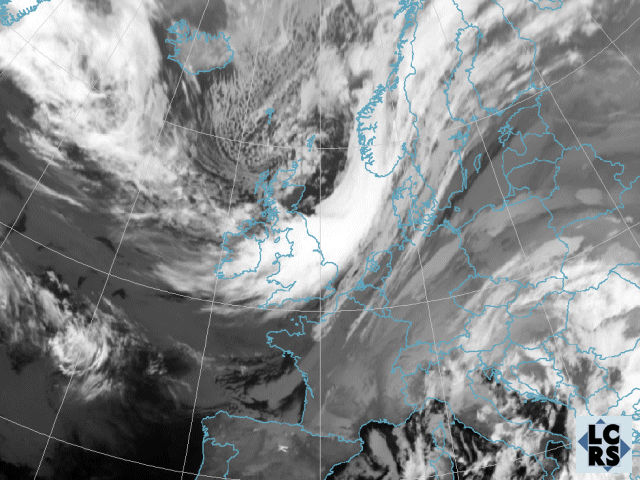Authors
LCRSAndré Obregón
Jan Cermak
Jörg Bendix
DWD
Wilfried Jacobs
Introduction
On 25 November 2005 severe snowfall disrupted public life in Twenthe and the Achterhoek (Netherlands) as well as in the Münsterland region (Germany). The snowfall caused an outage of power plants leaving people without heating and electricity for several days. Due to a high pressure system over East Europe the cyclone, wich caused the heavy snowfall, was blocked and remained stationary over the central and northern Netherlands for a long time.Severe westerly winds reaching 97 kn in gusts caused a weather alarm in the Netherlands. A snow depth of 25 cm was measured in the Münsterland region on 25 November which is very unusual at this time in this area. Heavy winds that led to snow drift enforced the situation.

|

|

|
The development in this case study can be related to the conceptual model of an instant occlusion, also known as a pseudo-occlusion. It describes the merging of a distinct cold air comma-like cloud feature with a cold front cloud band. The term 'instant occlusion' is used because the mature stage of the development shows a cloud spiral similar to that of a normal occlusion. But the meteorological processes are totally different from an occlusion process where advection of cold air lifts warm air.
The two images below show the situation in the North Sea area and NW European Continent with IR images for the pre-merging stage and the mature stage respectively.

Pre-Merging Stage: 24 Nov 2005 06UTC - Meteosat-8 IR10.8 |

Mature Stage: 25 Nov 2005 00UTC - Meteosat-8 IR10.8 |
The aim of this case study is to:
- Follow the development of an instant occlusion by studying IR and WV satellite images as well as RGB composites
- Investigate the dynamical background by considering derived meteorological parameters
Before working with this case study it is recommended to study the conceptual models of "Instant Occlusion", "Cold Air Development", "Comma" and "Rapid Cyclogenesis" in the "Manual of Synoptic Satellite Meteorology".
The following parameters are considered key parameters of an instant occlusion and will be discussed within this case study:
- Geopotential height at 500 and 1000 hPa:
- Temperature advection at 700 hPa
- Positive vorticity advection at 500 and 300 hPa
- Isotachs at 300 hPa
- Thermal front parameter (TFP)
- Equivalent thickness
In order to obtain a better insight into the relevant dynamical processes, a number of supporting parameters will be considered in vertical cross sections:
- Height of PV=2
- Divergence and convergences
- Vertical motion
LCRS - Laboratory for Climatology and Remote Sensing
Faculty of Geography, University of Marburg
Germany